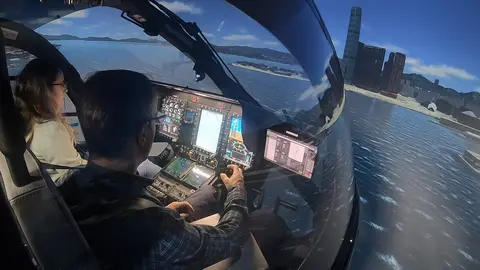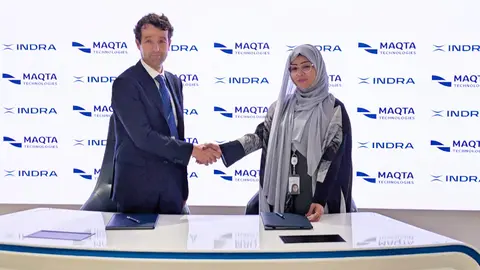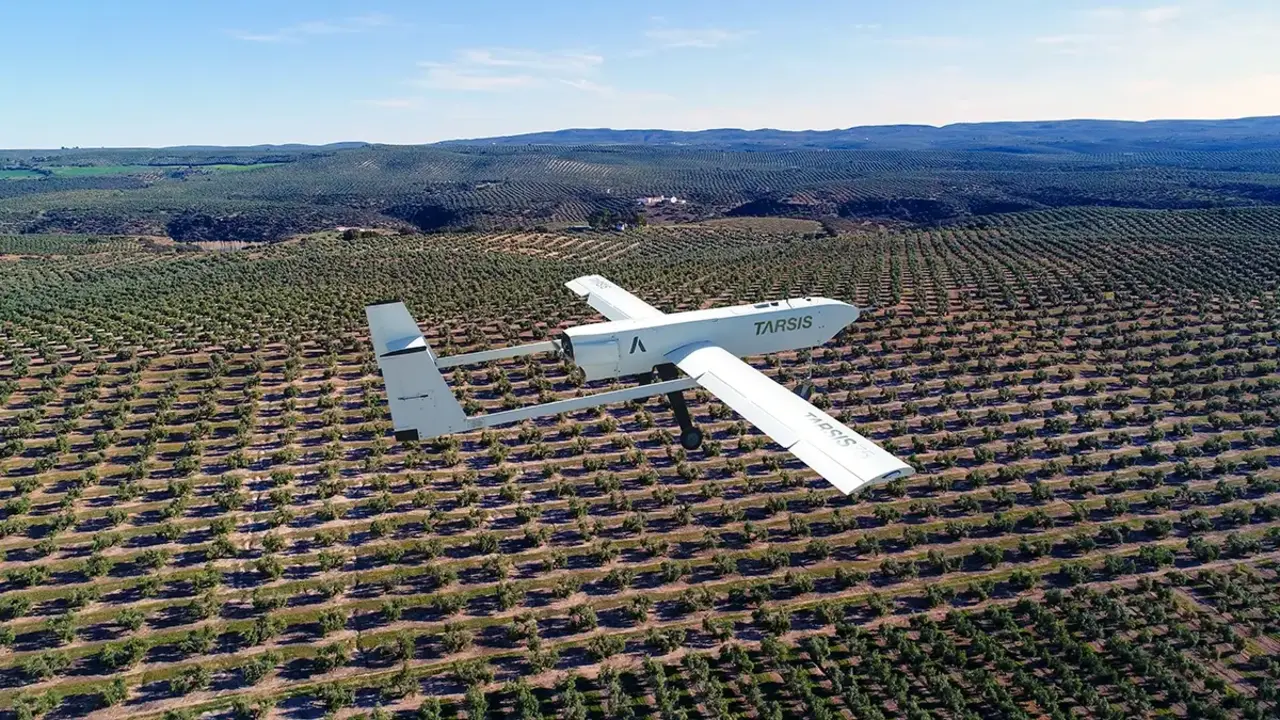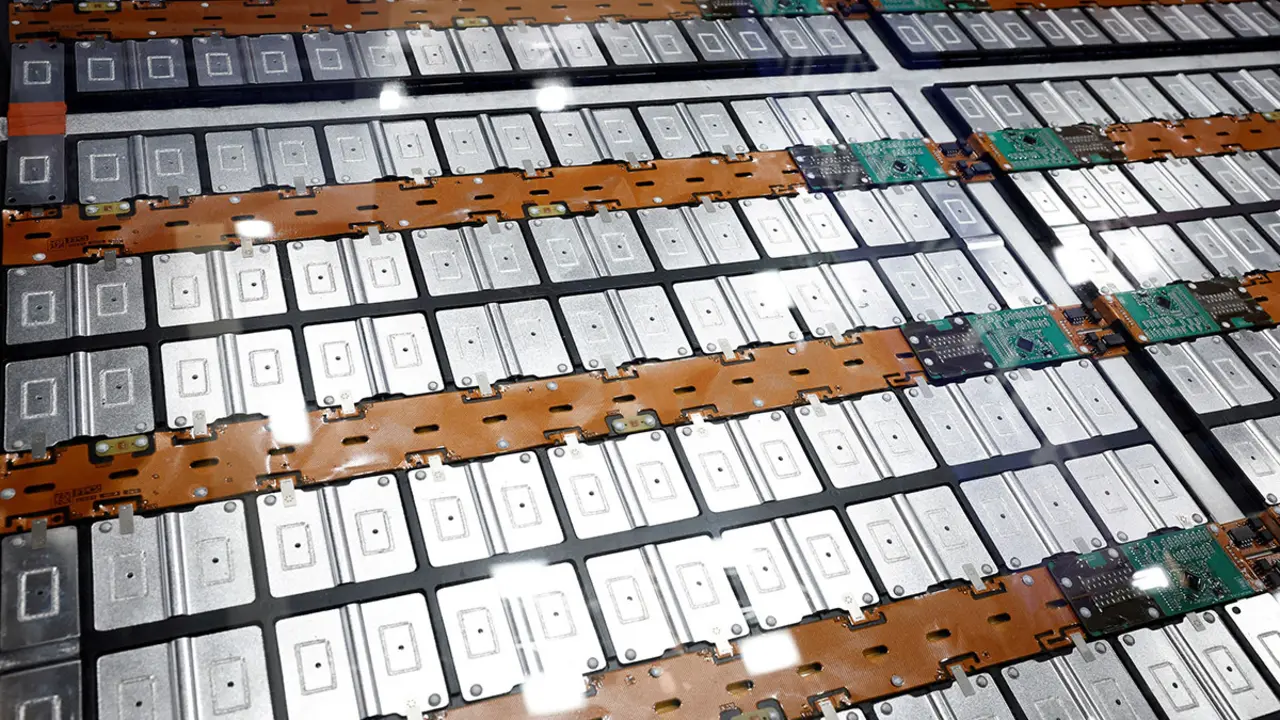Spain's Defence Minister tests Indra's CH-47F Chinook simulator
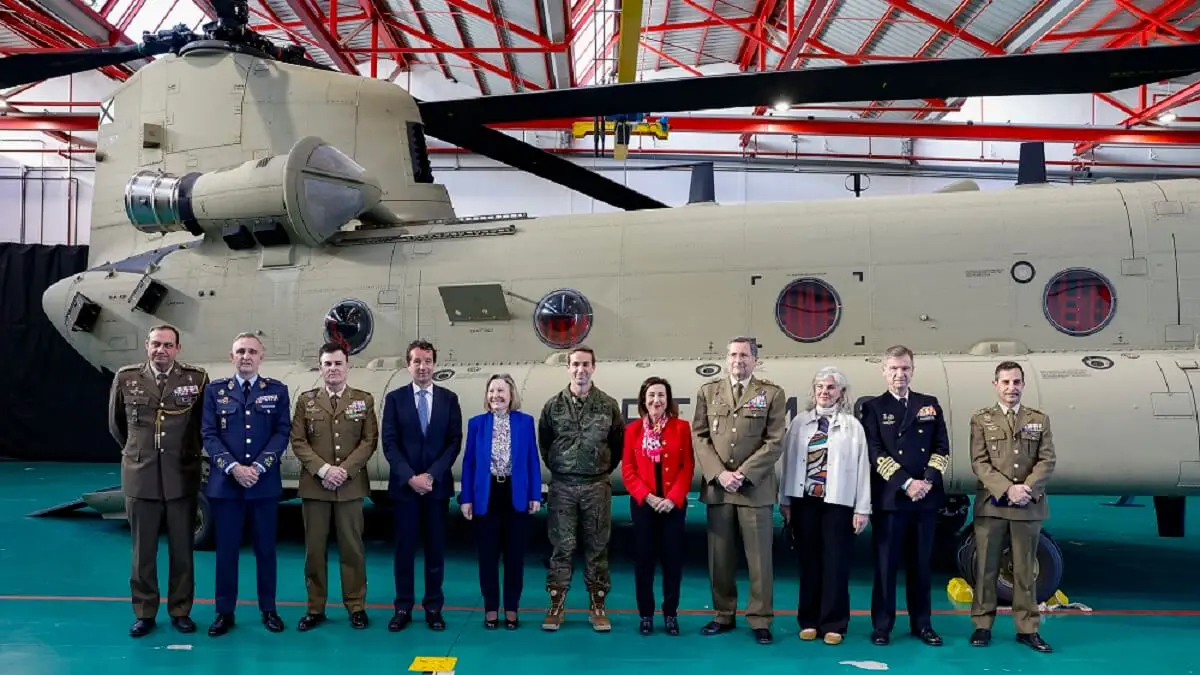
Spain's Defence Minister Margarita Robles and the Secretary of State for Defence, Amparo Valcarce, accompanied by military authorities and Indra's Chairman, Ángel Escribano, visited the Centre for Helicopter Simulation (CESIHEL) of the Spanish Army Aviation Academy (ACAVIET), where they were able to see the simulator of the Chinook CH-47F helicopter developed by Indra, the first one manufactured in Europe for this version of the aircraft.
The visit took place within the framework of the delivery of the last unit of the new CH-47F Chinook helicopter to the FAMET's Colmenar Viejo base.
Indra's Full Mission Simulator (FMS) is already training the pilots of the Transport Helicopter Battalion V (BHELTRA V). This simulator completes the Integral Training System for the preparation of BHELTRA V personnel, which together with the trainer (FTD, Flight Training Device) and the computer-based training system (CBT, Computer Based Trainer) that the company previously delivered, covers all phases of personnel training on the platform.
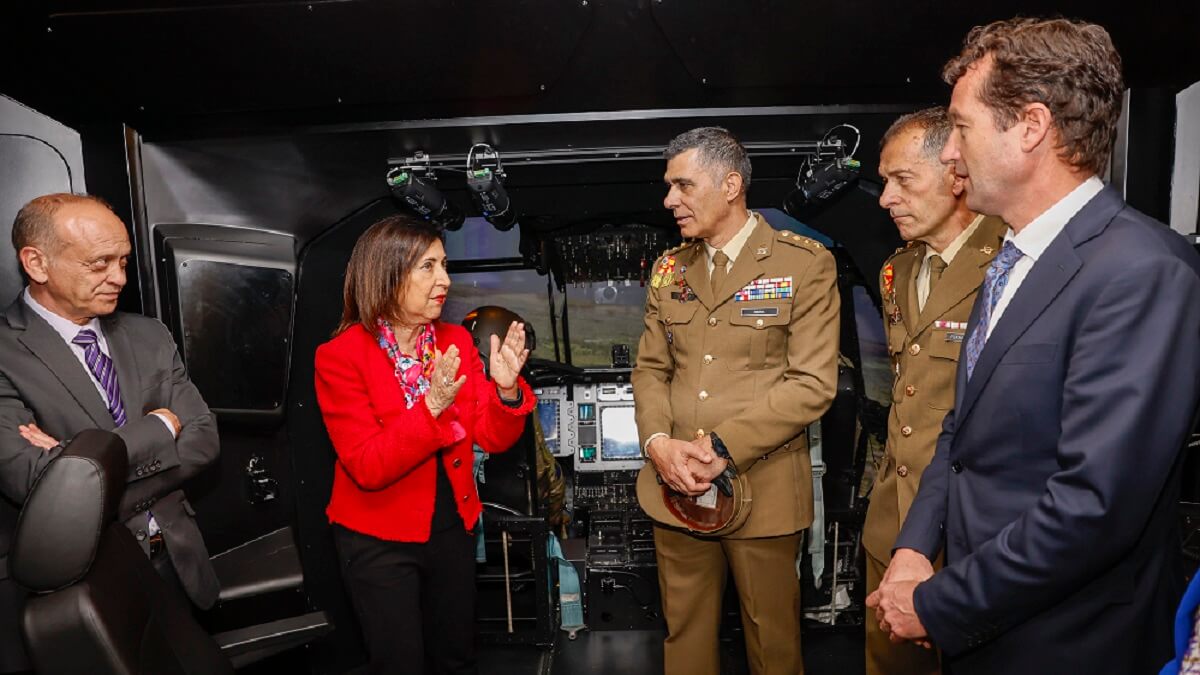
Among the advantages of synthetic training is the saving of up to 40% of the actual flight hours needed to ensure the training, instruction and advanced tactical training of aircrews.
Helicopters are increasingly complex and advanced platforms, which means that pilots require several years of training to reach the level needed to face a real operation. Simulators play a key role in providing the Spanish Armed Forces with the operational capability they require, as the number of helicopters that can be used on a mission is determined by the number of pilots available with the required level of training.
This training in turn increases flight safety and reduces operating and maintenance costs, both in terms of maintenance and fuel consumption, material wear and tear and ammunition use.
Regarding the development of the simulator, Indra has followed the same design strategy used in other systems delivered to the Army, using the same avionics equipment used in the aircraft. This ensures maximum fidelity in training and guarantees that future simulator evolutions will coincide with those of the aircraft themselves.
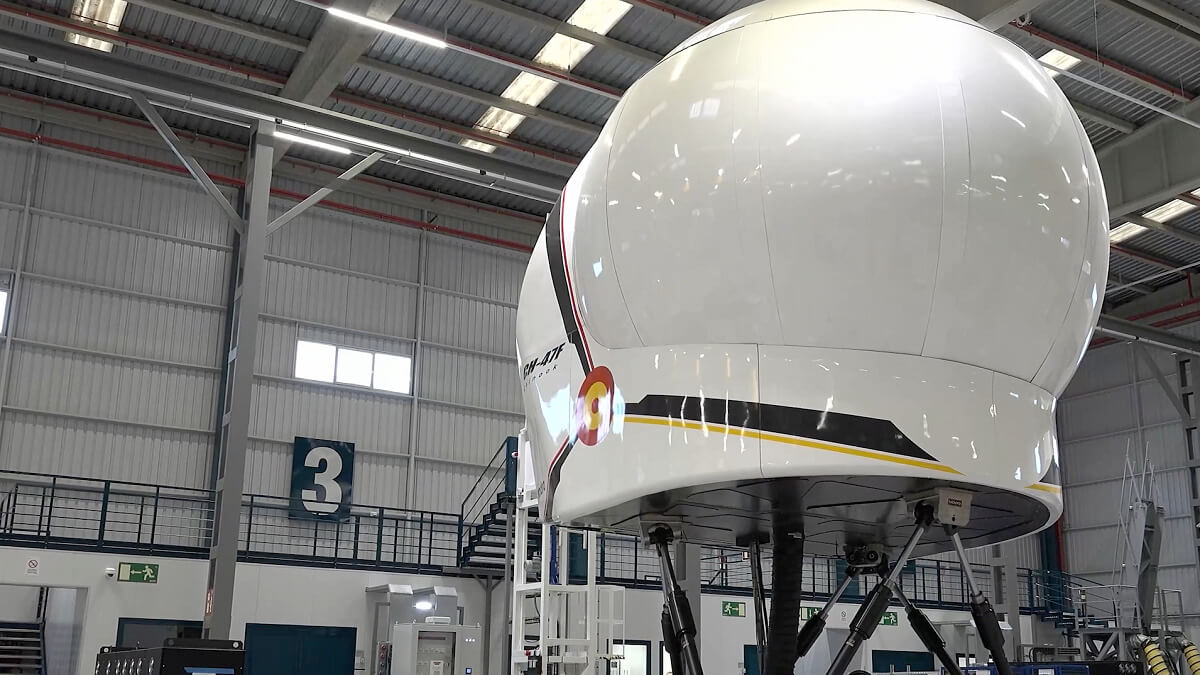
In addition, Indra has employed a networked simulation architecture, based on the HLA standard, which allows joint tactical training of a mission from several simulators, so that pilots located in different bases flying with other platforms (Tiger, Cougar, EC135 and NH90) can share the same scenario in which to carry out the joint training.
The system also features a projection system based on 4LED technology, which introduces a fourth channel of infrared light for the pilot to train the flight with his own night vision goggles (NGV), providing enhanced visual quality. The realism is complemented by high-definition terrain, city and environment modelling that allows pilots to familiarise themselves with the environment in which they will be flying their mission before they even reach their destination.
"The modernisation of the simulation system of the Chinook helicopter is another step forward in the work that, for decades, both the Spanish Army and Indra have been carrying out to turn CESIHEL into one of the most advanced simulation centres in Europe. Spain has opted for a joint tactical training in which the pilot is not only prepared to fly his aircraft, but above all to carry out the mission with maximum efficiency, coordinating with the rest of the deployed force", explains José María Tapia, head of Indra's Simulation Programmes.
The Chinook is one of the most powerful transport helicopters in the market, capable of carrying more than 10 tons or dozens of soldiers. This exceptional performance has led many countries to invest in its modernisation with the aim of extending its useful life beyond 2040, as it is a key element for transporting material and personnel, resupply, rescue or deployments.

